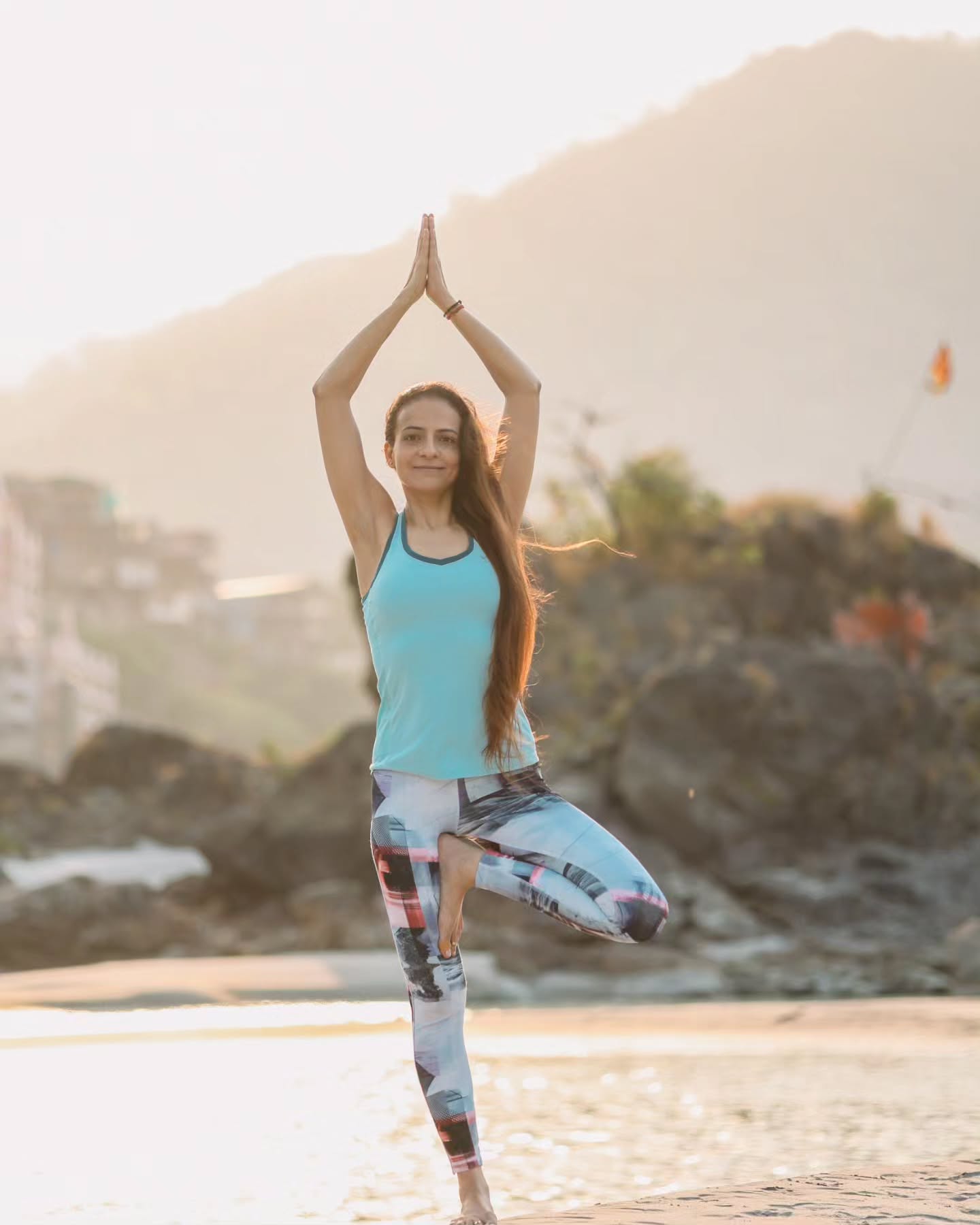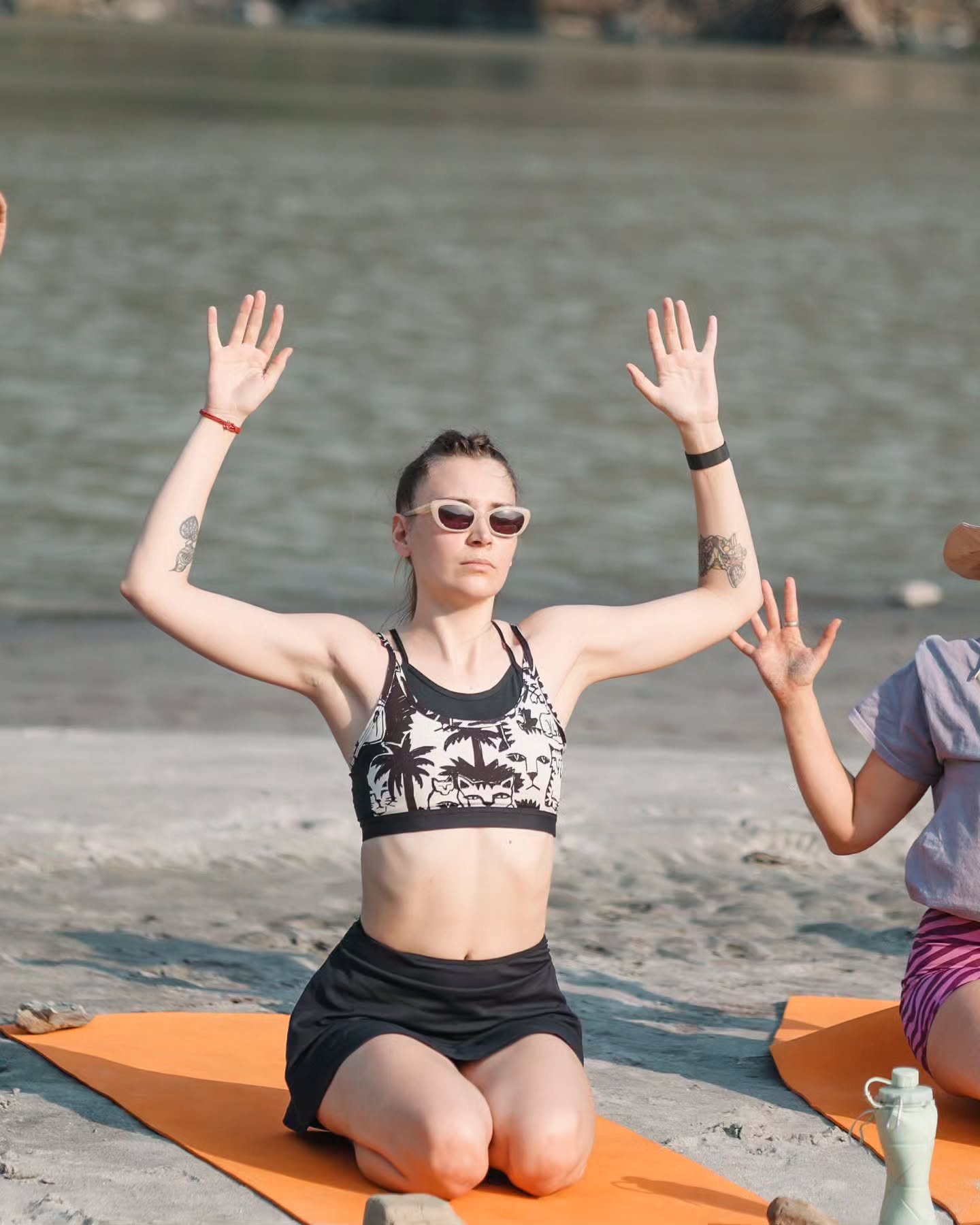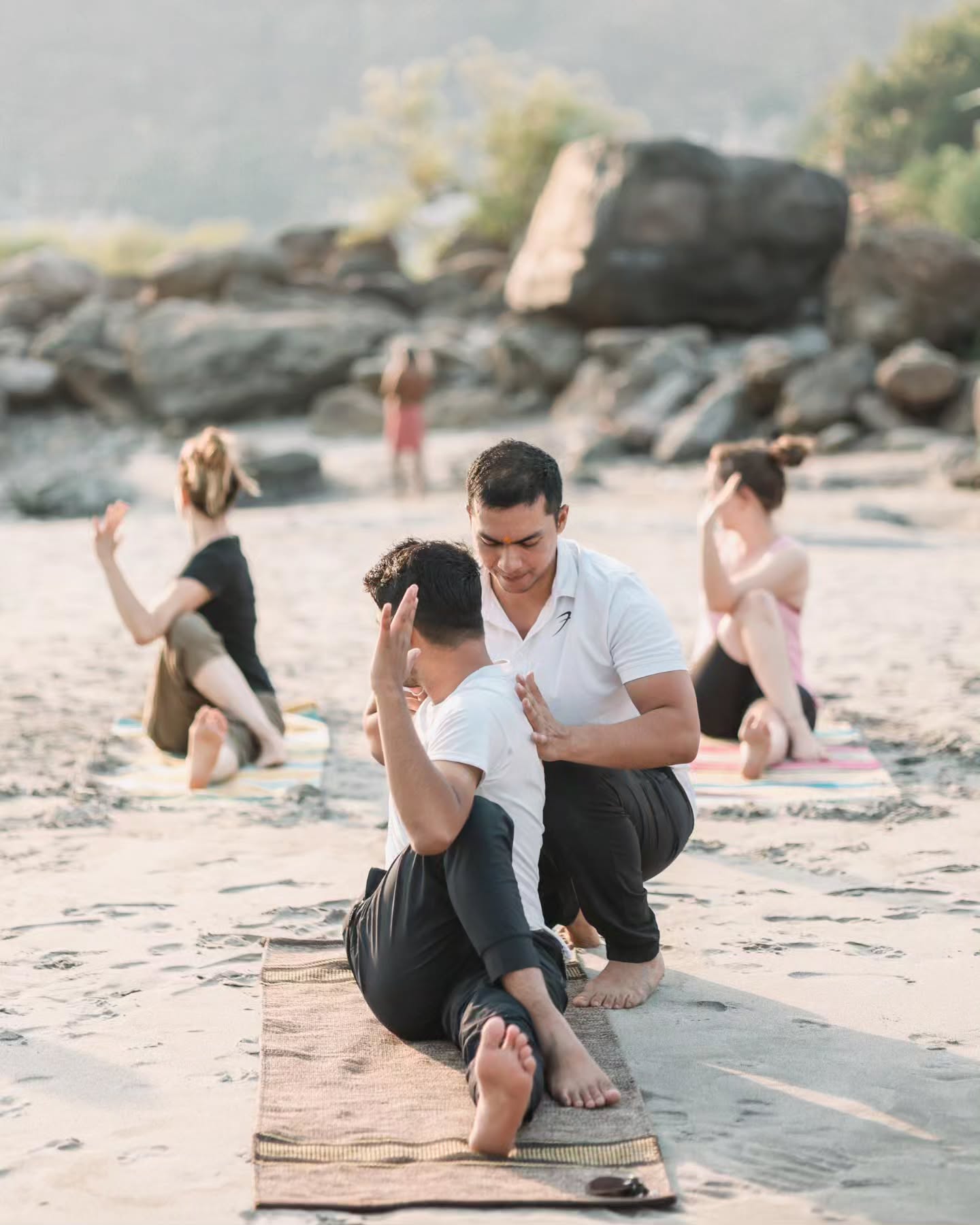If you’ve ever thought, “I’m too stiff for yoga,” you’re not alone. Many people believe they have to be flexible before they start yoga. But here’s the truth: you do yoga to become flexible, not the other way around.
Whether your body feels tight from years of sitting at a desk, a lack of regular movement, or simply aging, yoga offers gentle yet effective ways to improve your flexibility. The best part? You don’t need to touch your toes, stand on your head, or be an athlete to get started.
This beginner’s guide will show you why yoga is perfect for stiff bodies and how to safely and gradually build flexibility — no matter your age or fitness level.
Why Are Our Bodies So Stiff?
Stiffness is usually caused by a combination of these common factors:
- Sitting too much: Long hours in a chair tighten the hips, back, and shoulders.
- Lack of stretching: If you don’t move your joints through full range regularly, they become less mobile.
- Aging: Muscles naturally lose elasticity over time.
- Stress: Tension in the body often shows up as tight shoulders, neck, or back.
- Injuries or inactivity: Recovering from injuries or not exercising regularly can reduce flexibility.
The good news is that yoga addresses all of these.
How Yoga Helps Stiff Bodies
Yoga isn’t just stretching — it’s a full-body practice that improves flexibility, strength, balance, and awareness. For stiff people, the benefits include:
1. Gradual and Gentle Movements
Yoga encourages slow, mindful stretching that’s perfect for beginners. You go only as far as your body allows.
2. Deep Breathing
Breathing in yoga calms your nervous system and helps muscles relax, making it easier to stretch without strain.
3. Improved Circulation
Yoga poses help move blood and oxygen into stiff areas, warming up the muscles and reducing tightness.
4. Consistency Builds Progress
You don’t need to stretch deeply on day one. With regular practice, your body naturally opens up over time.
Getting Started: Tips for Stiff Beginners
If you’re feeling intimidated, these tips will help you ease into yoga safely and comfortably:
✅ Start Slow
Choose beginner-friendly poses and routines. Avoid fast-paced or advanced classes in the beginning.
✅ Use Props
Blocks, straps, cushions, or even a chair can support your body and make poses more accessible.
✅ Warm Up First
Start each session with light movements to warm your joints — neck rolls, shoulder shrugs, or gentle walking.
✅ Don’t Force Anything
Stretching should feel good, not painful. If you feel sharp discomfort, back off.
✅ Breathe Through It
Deep, steady breathing helps release tension. Inhale as you lengthen, exhale as you relax deeper into poses.
The Best Yoga Poses for Stiff Bodies
These beginner yoga poses are ideal for tight muscles. Hold each one for 30–60 seconds, breathing slowly and deeply. If needed, use props for comfort.
1. Child’s Pose (Balasana)
What it stretches: Lower back, hips, thighs
How to do it:
- Kneel and sit back on your heels.
- Reach your arms forward and lower your forehead to the mat.
- Breathe slowly and let your hips sink toward your heels.
- Place a pillow under your chest or knees if needed.
Why it helps: Gently opens the hips and relieves back stiffness.
2. Seated Forward Bend (Paschimottanasana)
What it stretches: Hamstrings, lower back
How to do it:
- Sit with legs straight in front of you.
- Inhale to sit tall, exhale to slowly fold forward from the hips.
- Keep your knees bent if needed and rest hands on your legs.
Why it helps: Stretches the back of the body and promotes spinal flexibility.
3. Cat-Cow Stretch (Marjaryasana–Bitilasana)
What it stretches: Spine, shoulders, chest
How to do it:
- Start on hands and knees.
- Inhale, arch your back and lift your head (Cow).
- Exhale, round your spine and tuck your chin (Cat).
- Repeat slowly for 5–10 rounds.
Why it helps: Improves spinal mobility and warms up the back gently.
4. Reclining Pigeon (Figure Four Stretch)
What it stretches: Hips, glutes, lower back
How to do it:
- Lie on your back.
- Cross your right ankle over your left thigh, forming a “4.”
- Hold behind your left thigh and pull it gently toward you.
- Switch sides.
Why it helps: Opens tight hips — a common issue for people who sit a lot.
5. Standing Forward Fold (Uttanasana)
What it stretches: Hamstrings, calves, spine
How to do it:
- Stand with feet hip-width apart.
- Hinge from your hips and let your upper body hang forward.
- Keep a slight bend in your knees if needed.
Why it helps: Lengthens the back of the legs and releases spinal tension.
6. Low Lunge (Anjaneyasana)
What it stretches: Hip flexors, thighs
How to do it:
- Step your right foot forward into a lunge, left knee down.
- Keep your right knee above your ankle and hands on your thigh or reach arms overhead.
- Switch sides.
Why it helps: Great for opening tight hips from prolonged sitting.
7. Legs Up the Wall (Viparita Karani)
What it stretches: Back of legs, lower back
How to do it:
- Sit sideways next to a wall.
- Swing your legs up the wall and lie back with arms at your sides.
- Breathe and relax.
Why it helps: Gently stretches the legs and calms the nervous system.
Sample Beginner Yoga Routine for Stiff Bodies (15 Minutes)
You can try this simple sequence at home to gently open your body and reduce stiffness:
- Cat-Cow – 2 minutes
- Child’s Pose – 1 minute
- Low Lunge (both sides) – 2 minutes
- Seated Forward Fold – 2 minutes
- Reclining Pigeon (both sides) – 2 minutes
- Legs Up the Wall – 3–5 minutes
Do this routine daily or 3–4 times a week, and you’ll start noticing improvements in flexibility and comfort.
How Long Before You See Results?
Every body is different, but with consistent practice:
- After 1 week: You may feel more relaxed and aware of your posture.
- After 2–4 weeks: Movements feel easier, and muscles feel less tight.
- After 1–2 months: Significant improvement in flexibility and mobility.
The key is consistency, not intensity. Even just 10–15 minutes a day is enough.
Common Questions
❓ What if I’m really out of shape?
Yoga meets you where you are. You can start with chair yoga or bed yoga — and progress at your own pace.
❓ I can’t sit on the floor. Can I still do yoga?
Yes! You can modify poses using a chair, pillows, or practice while lying down. Comfort is the priority.
❓ Will yoga hurt?
No — yoga should never hurt. You may feel mild stretching, but never sharp or painful sensations. Always listen to your body.
Final Thoughts
Being stiff doesn’t mean you’re “bad at yoga.” It means your body is asking for movement, attention, and care. Yoga is one of the best ways to answer that call — gently, patiently, and effectively.
You don’t need to be flexible to begin yoga. You just need a willingness to start. And when you do, your body will slowly thank you with more ease, better posture, and a surprising sense of freedom.



